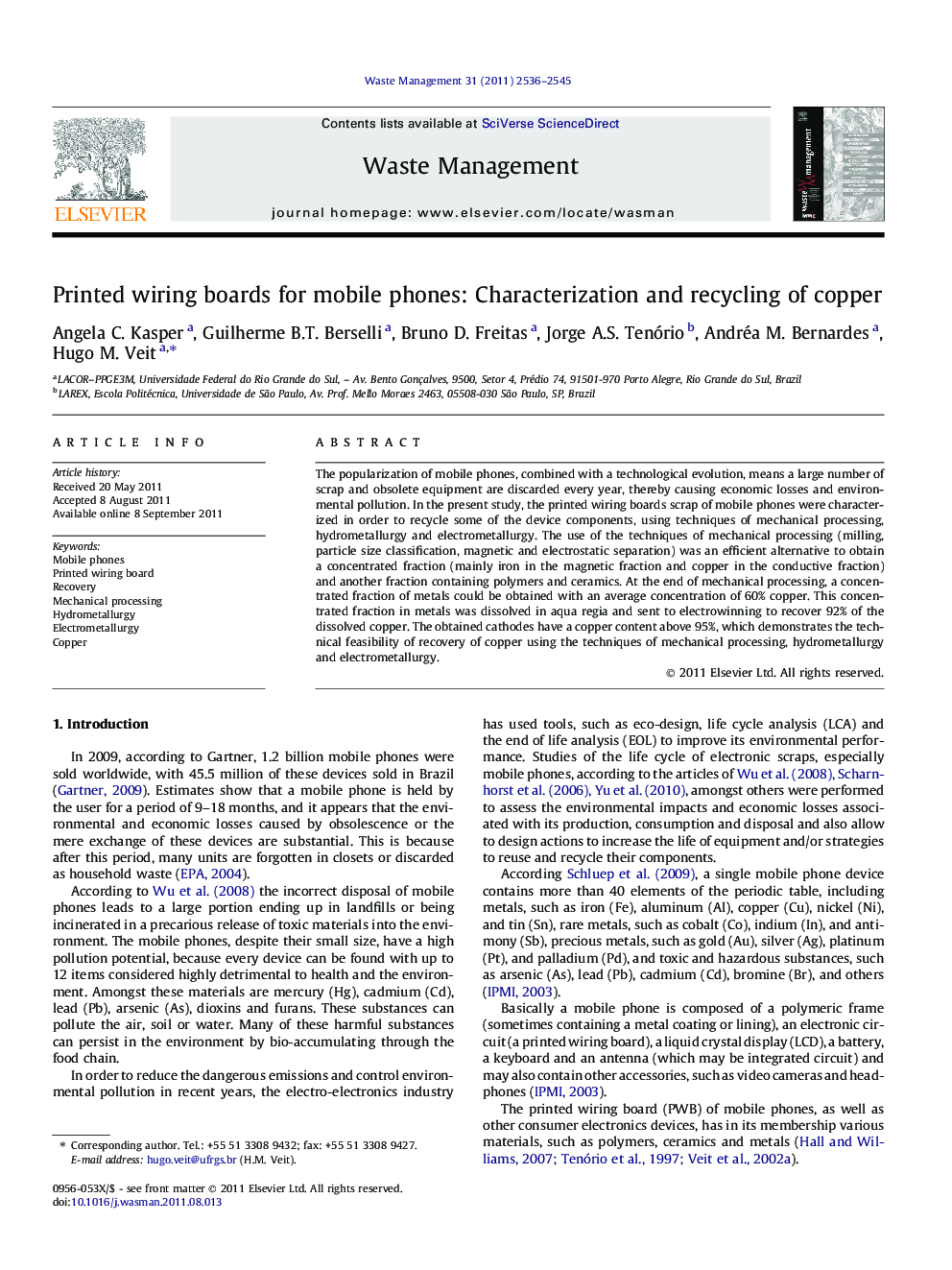| Article ID | Journal | Published Year | Pages | File Type |
|---|---|---|---|---|
| 4472293 | Waste Management | 2011 | 10 Pages |
The popularization of mobile phones, combined with a technological evolution, means a large number of scrap and obsolete equipment are discarded every year, thereby causing economic losses and environmental pollution. In the present study, the printed wiring boards scrap of mobile phones were characterized in order to recycle some of the device components, using techniques of mechanical processing, hydrometallurgy and electrometallurgy. The use of the techniques of mechanical processing (milling, particle size classification, magnetic and electrostatic separation) was an efficient alternative to obtain a concentrated fraction (mainly iron in the magnetic fraction and copper in the conductive fraction) and another fraction containing polymers and ceramics. At the end of mechanical processing, a concentrated fraction of metals could be obtained with an average concentration of 60% copper. This concentrated fraction in metals was dissolved in aqua regia and sent to electrowinning to recover 92% of the dissolved copper. The obtained cathodes have a copper content above 95%, which demonstrates the technical feasibility of recovery of copper using the techniques of mechanical processing, hydrometallurgy and electrometallurgy.
► We have characterized the printed wiring boards scrap of mobile phones. ► The PWB for mobile phones have in their composition metals of economic interest and hazardous metals. ► We recovered copper using mechanical processing, hydrometallurgy and electrometallurgy. ► Mechanical processing was effective to concentrate copper and iron. ► Using the electrowinning process was possible to recover 92% of the dissolved copper.
